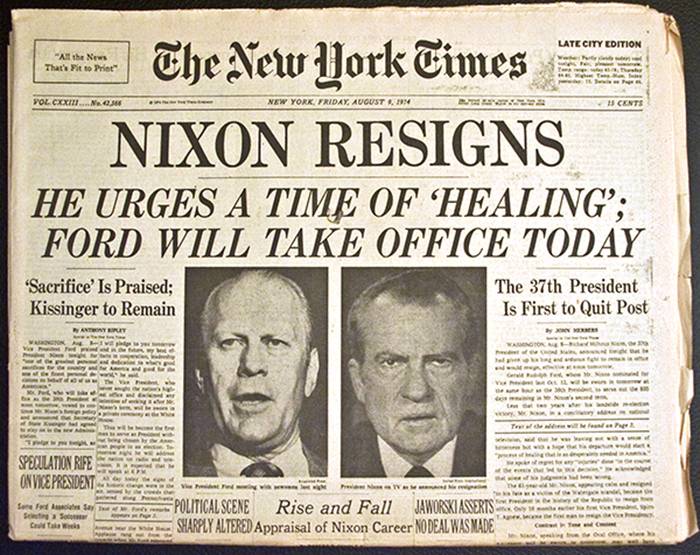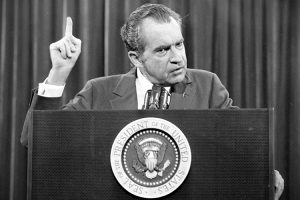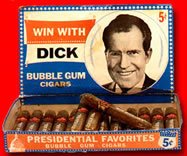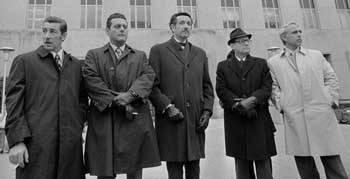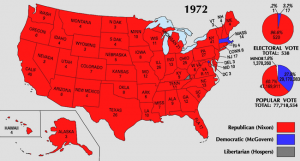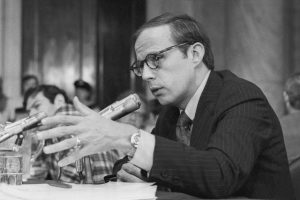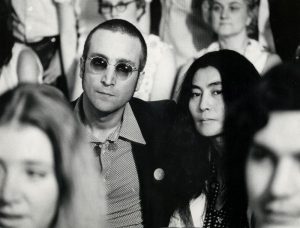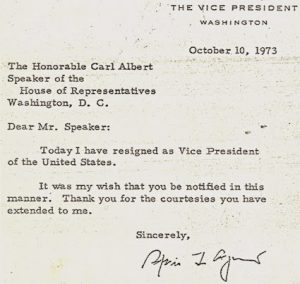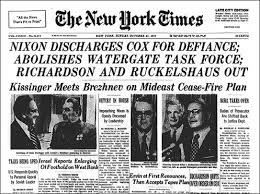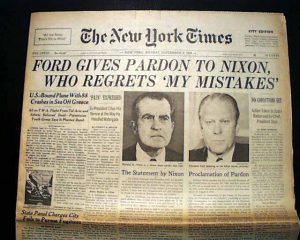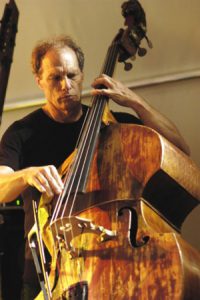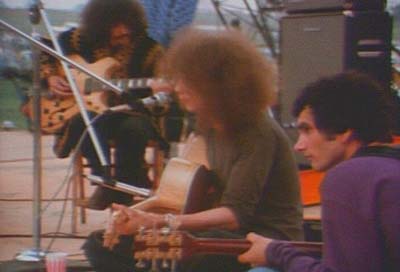Richard Nixon Watergate Scandal
Nixon’s Watergate Scandal is a long story, but here is the chronology of Nixon’s predicament that led to his resignation.
I will briefly include two other incidents that occurred during this time: the resignation of Nixon’s Vice President, Spiro T Agnew, and the publication of the so-called Pentagon Papers.
Richard Nixon Watergate Scandal
The improbable election
November 5, 1968: Richard Milhous Nixon, the 55-year-old former vice president who lost the presidency for the Republicans in 1960, reclaimed it by defeating Hubert Humphrey in one of the closest elections in U.S. history.
Richard Nixon Watergate Scandal
1971
February 16, 1971: Nixon began secret recordings using a newly installed taping system in White House.
September 3, 1971: the White House “plumbers” unit – named for their orders to plug leaks in the administration – burglarized a psychiatrist’s office to find files on Daniel Ellsberg, the former defense analyst who leaked the Pentagon Papers.
Richard Nixon Watergate Scandal
1972
May 28, 1972: bugging equipment is installed at the Democratic National Committee headquarters at the Watergate hotel and office complex in Washington DC.
June 17, 1972: at 2:30 in the morning, police arrested five burglars in the Democratic National Committee headquarters at the Watergate office and apartment complex in Washington, D.C. James McCord, Frank Sturgis, Bernard Barker, Virgilio Gonzalez, and Eugenio Martinez after a security guard at the Watergate noticed that several doors leading from the stairwell to various hallways had been taped to prevent them from locking. The intruders wore surgical gloves and carried walkie-talkies, cameras, and almost $2,300 in sequential $100 bills. A subsequent search of their rooms at the Watergate turned up an additional $4,200, burglary tools, and electronic bugging equipment.
June 19, 1972: a GOP security aide is among the Watergate burglars, The Washington Post reported. Former attorney general John Mitchell, head of the Nixon reelection campaign, denied any link to the operation.
June 23, 1972: President Nixon had a conversation with his Chief of Staff, H R Haldeman. Two years later, the tape of the conversation was released, following an order by the Supreme Court. The Smoking Gun tape revealed that Nixon had ordered the FBI to abandon its investigation of the Watergate break-in. (transcript of video )
August 1, 1972: the Washington Post reported that a $25,000 cashier’s check, apparently earmarked for the Nixon campaign, wound up in the bank account of a Watergate burglar.
August 30, 1972: Nixon claimed that White House counsel John Dean had conducted an investigation into the Watergate matter and found that no-one from the White House was involved.
September 15, 1972: the first indictments in Watergate were made against the burglars: James W. McCord, Frank Sturgis, Bernard Barker, Eugenio Martinez and Virgilio Gonzalez. Indictments are also made against E. Howard Hunt and G. Gordon Liddy.
September 29, 1972: the Washington Post reported that John Mitchell, while serving as attorney general, controlled a secret Republican fund used to finance widespread intelligence-gathering operations against the Democrats. October 10, 1972: the Washington Post reported that FBI agents had established that the Watergate break-in stemmed from a massive campaign of political spying and sabotage conducted on behalf of the Nixon reelection effort.
Carl Bernstein and Bob Woodward were two young Washington Post reporters who were covering the expanding story. During October and until November 1963, the reporters met with an informant code named “Deep Throat” who provided much of the vital information that led to Nixon himself.
November 7, 1972: Nixon reelected in one of the largest landslides in American political history, taking more than 60 percent of the vote and crushing the Democratic nominee, Sen. George McGovern of South Dakota.
1972 (55.22% voter age turnout*)
| Candidate | Popular vote | % popular vote | Electoral vote | % electoral vote |
| Richard Nixon | 47,168,710 | 60.67% | 520 | 96.7% |
| George McGovern | 29,173,222
(-17,995,488) |
37.52% | 17 | 3.2% |
* first time that 18 year olds were eligible to vote in presidential election
November 22, 1972: Walter Cronkite devoted 15 minutes to Watergate on the CBS Evening News. The scandal becomes a mainstream media issue.
Richard Nixon Watergate Scandal
January 1973
January 3. 1973: The United States v Anthony Joseph Russo and Daniel Ellsberg trial began in Los Angeles. Meanwhile, hearings and trials associated with the Watergate break-in begin in Washington, D.C.
January 8, 1973: in Washington, DC, the trial of the Watergate Seven (Bernard Barker, Virgilio Gonzalez, E Howard Hunt, G Gordon Liddy, Eugenio Martinez, James McCord and Frank Sturgis) began in Washington with Judge John Sirica presiding. January 11, 1972: E Howard Hunt pleads guilty.
January 15, 1972: Bernard Barker, Virgilio Gonzalez, Eugenio Martinez and Frank Sturgis plead guilty. January 30, 1973: former Nixon aides G. Gordon Liddy and James W. McCord Jr. convicted of conspiracy, burglary and wiretapping in the Watergate incident. (NYT article)
January 30, 1973: former Nixon aides G. Gordon Liddy and James W. McCord Jr. convicted of conspiracy, burglary and wiretapping in the Watergate incident. (NYT article)
Richard Nixon Watergate Scandal
February/March 1973
February 7, 1973: the Senate voted (70-0) to create the Select Committee on Presidential Campaign Activities. The Committee is chaired by Senator Sam Ervin (Democrat, North Carolina). Ervin cultivated a folksy image as a country lawyer, but his supervision of this committee is crucial to the outcome. His deputy is Senator Howard Baker (Republican, Tennessee). (NYT article)
February 28, 1973: confirmation hearings begin for confirming L. Patrick Gray as permanent Director of the FBI. During these hearings, Gray revealed that he had complied with an order from John Dean to provide daily updates on the Watergate investigation, and also that Dean had “probably lied” to FBI investigators.
March 21, 1973: White House counsel John Dean had the “Cancer in the Whitehouse” conversation. Dean recalled, “I began by telling the president that there was a cancer growing on the presidency and if the cancer was not removed that the president himself would be killed by it. I also told him that it was important that this cancer be removed immediately because it was growing more deadly every day…
“I told the president about the fact that there was no money to meet their [the Watergate burglars] demands. He asked me how much it would cost. I told him I could only make an estimate that it might be as high as a million dollars or more. He told me that that was no problem. He also looked over at [Chief of Staff H.R.] Haldeman and repeated the same statement.”
March 23, 1973: in a letter to Judge John Sirica, Watergate burglar James W. McCord Jr. claimed that the defendants had pleaded guilty under duress. He says they committed perjury and that others are involved in the Watergate break-in. He claims that the burglars lied at the urging of John Dean, Counsel to the President, and John Mitchell, the Attorney-General. These allegations of a cover-up and obstruction of justice by the highest law officers in the land blew Watergate wide open. (link to letter)
Richard Nixon Watergate Scandal
April 1973
April 6, 1973: John Dean, the White House Counsel, began to co-operate with the Watergate prosecutors.
April 17, 1973: Nixon announced that White House staff would appear before the Senate Committee. He promised “major new developments” in the investigation and said there had been real progress towards finding the truth.
April 17, 1973: an official statement from the White House claimed Nixon had no prior knowledge of the Watergate affair.
April 22, 1973 (Easter Sunday): Nixon asked John Dean to prepare a report about the Watergate affair. He sent Dean to Camp David to write the report.
April 30, 1973: Nixon appears on national television and announced the dismissal of Dean and the resignations of Haldeman and Erlichman, describing them as two of his “closest advisers”. The Attorney-General, Richard Kleindienst, also resigned and was replaced by Elliot Richardson. (transcript)
Richard Nixon Watergate Scandal
May 1973
May 4, 1973: Nixon appoints General Alexander Haig as White House Chief of Staff, in place of Haldeman.
May 18, 1973: the Senate Watergate committee began its nationally televised hearings. Attorney General-designate Elliot Richardson selected former solicitor general Archibald Cox as the Justice Department’s special prosecutor for Watergate. May 25, 1973: the former Solicitor-General, Archibald Cox, is sworn in as the Justice Department’s special prosecutor for Watergate. Attorney General-designate Elliot Richardson nominated him.
Richard Nixon Watergate Scandal
June 1973
June 3, 1973: the Washington Post reported that John Dean told Watergate investigators that he discussed the Watergate cover-up with President Nixon at least 35 times.
June 13, 1973: the Washington Post reported that Watergate prosecutors had found a memo addressed to John Ehrlichman describing in detail the plans to burglarize the office of Pentagon Papers defendant Daniel Ellsberg’s psychiatrist.
June 13, 1973: Alexander Butterfield, former presidential appointments secretary, revealed in congressional testimony that since 1971 Nixon had recorded all conversations and telephone calls in his offices.
June 23, 1973: Nixon’s adviser, H.R. Haldeman, told the president to put pressure on the head of the FBI to “stay the hell out of this [Watergate burglary investigation] business.” In essence, Haldeman was telling Nixon to obstruct justice.
June 26, 1973: former White House counsel John W. Dean told the Senate Watergate Committee about an “enemies list” kept by the Nixon White House.
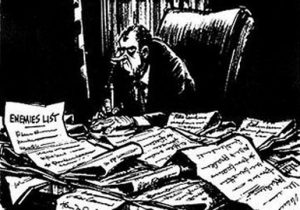
June 27, 1973: CBS reporter Daniel Schorr obtained a copy of Nixon’s infamous “enemies list” and read names from the list live on CBS television. In the midst of reading, he discovered that his own name was on the list. The “enemies list” was one of the abuses of power by the Nixon administration that were exposed as a result of the Watergate scandal and which eventually led to Nixon’s resignation. In fact, there was no single list, but several different versions that continued to grow in length.
Names on the original “enemies list” included reporter Daniel Schorr (number 17), actor Paul Newman, columnist Mary McGrory, labor union leader Leonard Woodcock, and African-American Congressmen John Conyers (Detroit) and Ron Dellums (Oakland).
June 27, 1973: John Lennon (still in the process of appealing his deportation) and Yoko Ono attended Watergate Hearings.
Richard Nixon Watergate Scandal
July 1973
July 7, 1973: Nixon told the Senate Committee that he would not testify before it and would not grant access to Presidential documents, claiming Executive Privilege.
July 16, 1973: former White House aide Alexander Butterfield informs the United States Senate Watergate Committee that President Richard Nixon had secretly recorded potentially incriminating conversations.
July 18, 1973: Nixon reportedly ordered the White House taping system disconnected.
July 23, 1973: The Senate Committee and Archibald Cox demand that Nixon hand over a range of White House tapes and documents. Nixon refused.
July 26, 1973: the Watergate Committee subpoenas several White House tapes.
Richard Nixon Watergate Scandal
August 1973
August 8, 1973: Vice President Spiro T. Agnew branded as “damned lies” reports he had taken kickbacks from government contracts in Maryland and vowed not to resign. (see Oct 10)
August 9, 1973: the Senate Committee took legal action against Nixon for failure to comply with the subpoena.
August 15, 1973: Nixon delivered a second on Watergate. He claimed executive privilege for the tapes and argued that he should not have to hand them over. Archibald Cox and the Senate Watergate committee request that the Supreme Court instruct Nixon to surrender the tapes.
August 29, 1973: Judge Sirica ordered Nixon to hand over 9 tapes for Sirica to review in private. This was the first of a number of court battles that Nixon is to lose. (NYT article)
Richard Nixon Watergate Scandal
October 1973
October 10, 1973: Spiro Agnew resigned the vice presidency and appeared in US District Court in Baltimore on the same day to plead nolo contendere to a single federal count of failing to report on his income-tax return $29,500 in income.
October 12, 1973: following the October 10 resignation of vice president Sprio Agnew, Nixon nominated House Minority Leader Gerald R. Ford, R-Mich., to succeed Agnew as vice president.
At the same time, the US Circuit Court of Appeals for the District of Columbia upheld Judge Sirica’s ruling that Nixon should surrender tape recordings relevant to Watergate.
October 19, 1973: Nixon offered a compromise to the Senate Watergate Committee, proposing that the Democratic Senator from Mississippi, John Stennis, be permitted to listen to the tapes and prepare summaries for Special Prosecutor Cox.
October 20, 1973: “Saturday Night Massacre”: Solicitor General Robert Bork fired Watergate Special Prosecutor Archibald Cox at the direction of President Richard Nixon after Attorney General Elliot Richardson and Assistant Attorney General Ruckelshaus had refused and resigned.
October 23, 1973: Nixon agreed to turn White House tape recordings requested by the Watergate special prosecutor over to Judge John J. Sirica.
Richard Nixon Watergate Scandal
November 1973
November 1, 1973: Leon Jaworski is named as the new Watergate Special Prosecutor.
November 17, 1973: President Nixon told an Associated Press managing editors meeting in Orlando, Fla., that “people have got to know whether or not their president is a crook. Well, I’m not a crook.”
November 21, 1973: President Richard Nixon’s attorney, J. Fred Buzhardt, revealed the existence of an 18 1/2-minute gap in one of the White House tape recordings related to Watergate. (2014 Washington Post article)
November 26, 1973: President Richard Nixon’s personal secretary, Rose Mary Woods, told a federal court that she’d accidentally caused part of the 18 1/2-minute gap in a key Watergate tape.
November 27, 1973: the Senate voted 92–3 to confirm Gerald Ford as Vice President.
Richard Nixon Watergate Scandal
December 1973
December 6, 1973: the House of Representatives voted 387–35 to confirm Gerald Ford as Vice President; he was sworn in the same day.
December 7, 1973: the White House can’t explain the 18 1/2 -minute gap in one of the subpoenaed tapes. Chief of staff Alexander Haig said one theory was that “some sinister force” erased the segment.
Richard Nixon Watergate Scandal
1974
January 4, 1974: citing executive privilege, Nixon refused to surrender 500 tapes and documents which have been subpoenaed by the Senate Watergate Committee.
February 6, 1974: The House of Representatives voted to authorize the House Judiciary Committee to investigate whether grounds exist for the impeachment of President Nixon.
March 1, 1974: seven people, including former Nixon White House aides H.R. Haldeman and John D. Ehrlichman, former Attorney General John Mitchell and former assistant Attorney General Robert Mardian, were indicted on charges of conspiring to obstruct justice.
April 16, 1974: Special Prosecutor Jaworski issued a subpoena for 64 White House tapes.
April 30, 1974: the White House released more than 1,200 pages of edited transcripts of the Nixon tapes to the House Judiciary Committee, but the committee insisted that the tapes themselves must be turned over.
May 9, 1974: The House of Representatives Judiciary Committee opened formal and public impeachment hearings against Nixon.
Richard Nixon Watergate Scandal
July 1974
July 24. 1974: the Supreme Court ruled unanimously that Nixon must turn over the tape recordings of 64 White House conversations, rejecting the president’s claims of executive privilege. (text of order via NY Times)
July 25, 1974: Barbara Jordan, a Democratic Party member of the House Judiciary Committee, makes a famous speech reminding her colleagues of the constitutional basis for impeachment of the President.
July 27, 1974: The House Judiciary Committee adopted the first Article of Impeachment by a vote of 27-11, with 6 Republicans voting with the Democrats. The Article charges Nixon with obstruction of the investigation of the Watergate break-in. July 29, 1974: the House Judiciary Committee adopts the second Article of Impeachment that charges Nixon with misuse of power and violation of his oath of office.
July 30, 1974: Nixon released subpoenaed White House recordings–suspected to prove his guilt in the Watergate cover-up–to special prosecutor Leon Jaworski. The same day, the House Judiciary Committee voted the third article of impeachment against the president: contempt of Congress in hindering the impeachment process. The previous two impeachment articles voted against Nixon by the committee were obstruction of justice and abuse of presidential powers.
Richard Nixon Watergate Scandal
August 1974
August 5, 1974: the “smoking gun” tape of June 23, 1972, was revealed, in which U.S. President Richard M. Nixon and White House Chief of Staff H.R. Haldeman discuss using the CIA to block a Federal Bureau of Investigation inquiry into Watergate. Nixon’s support in Congress collapses.
August 7, 1974: Three senior Republican congressmen meet with Nixon, advising him that his chances of avoiding impeachment by the House and removal from office by the Senate are “gloomy”. Around the country, calls mount for Nixon’s resignation, and speculation builds about Nixon’s intentions.
August 8, 1974: President Richard M. Nixon announced his resignation effective Aug 9 .
August 9, 1974: Gerald Ford becomes president.
Richard Nixon Watergate Scandal
Aftermath
September 8, 1974: though never indicted of any crimes, Gerald Ford gave an unconditional pardon to Richard Nixon.
October 4, 1974: the trial of Watergate conspirators HR Haldeman, John Erlichman, John Mitchell, Robert Mardian, and Kenneth Parkinson began, Judge John Sirica presiding.
December 19, 1974: Nelson A. Rockefeller sworn in as vice president, replacing Gerald R. Ford, who became president when Richard M. Nixon resigned.
January 27, 1975: in the wake of the Watergate scandal and the attendant abuses of power by the Nixon administration, and also recent revelations of illegal CIA spying on Americans [in The New York Times on December 22, 1974], the Senate created the Select Committee to Study Governmental Operations with respect to the Intelligence Agencies. Known as the Church Committee after its chair, Senator Frank Church (D–Idaho), the committee held public hearings about abuses by the intelligence agencies, and eventually published 14 reports on violations of the rights of American citizens by the intelligence agencies. The vote to create the committee was 82–4, indicating the depth of disgust over alleged abuses by the FBI and the CIA in the Senate.
The Church Committee reports are still an extremely valuable resource on the history of violations of American rights in the twentieth century. The Church Committee was paralleled by the Pike Committee, created by the House of Representatives on February 19, 1975. Following the revelations about the CIA by the Times, President Gerald Ford tried to head off Congressional investigations by creating the Rockefeller Commission to investigate the CIA on January 4, 1975, but that effort failed when Congress created the two committees.
The Church Committee hearings created sensation after sensation, with revelations of CIA assassination plots, and more. The Church Committee reports are still an invaluable source of information about the abuses of the CIA, the FBI, and other federal agencies. The reports also document the involvement of presidents, both Republican and Democratic, in approving many if not most of the abuses by the intelligence agencies.
February 21, 1975: former US Attorney General John N. Mitchell, and former White House aides H. R. Haldeman and John Ehrlichman, were sentenced to between 30 months and 8 years in prison.
October 28, 1976: John Ehrlichman entered the Swift Trail Federal Prison Camp in Safford, Arizona on October 28, 1976 and was released on April 27, 1978. He died of diabetes-related complications at his home in Atlanta, Georgia on February 14, 1999.
June 21, 1977: HR Haldeman, former White House chief of staff, entered prison. He will be paroled on On December 20, 1978, after serving 18 months. Haldeman will die on November 12, 1993 of abdominal cancer after refusing medical treatment in accordance with his Christian Science beliefs.
June 22, 1977: John N. Mitchell became the first former U.S. Attorney General to go to prison as he began serving a sentence for his role in the Watergate cover-up. After serving 19 months, Mitchell was released on parole for medical reasons on January 19, 1979. He was the only US attorney general to serve a prison sentence. Mitchell died November 9, 1988.
April 12, 1996: historian, Stanley I. Kutler won a legal victory that would lead to the slow but steady release of more than 3,000 hours of secretly recorded Nixon White House tapes. In a deal struck with the estate of former President Richard M. Nixon and the National Archives, the first set of the tapes — more than 200 hours chronicling the abuses of power known collectively as the Watergate scandals – were to be released by November, 1996. The agreement came 21 years after Congress ordered that the tapes be made public.
Kutler his lawyer, Alan Morrison of the advocacy group Public Citizen, and the National Archivist, John Carlin, said that the rest of the tapes, which cover almost everything of importance that Mr. Nixon and his aides said at the White House, at the Old Executive Office Building next door and at Camp David, Md., from February 1971 to July 1973, when their existence was disclosed, will gradually be released in the coming years. (NYT article)
May 31, 2005: W. Mark Felt’s family ended 30 years of speculation, identifying Felt, the former FBI assistant director, as “Deep Throat,” the secret source who helped unravel the Watergate scandal. The Felt family’s admission, made in an article in Vanity Fair magazine, took reporters Bob Woodward and Carl Bernstein, who had promised to keep their source’s identity a secret until his death, by surprise. Tapes show that Nixon himself had speculated that Felt was the secret informant as early as 1973.
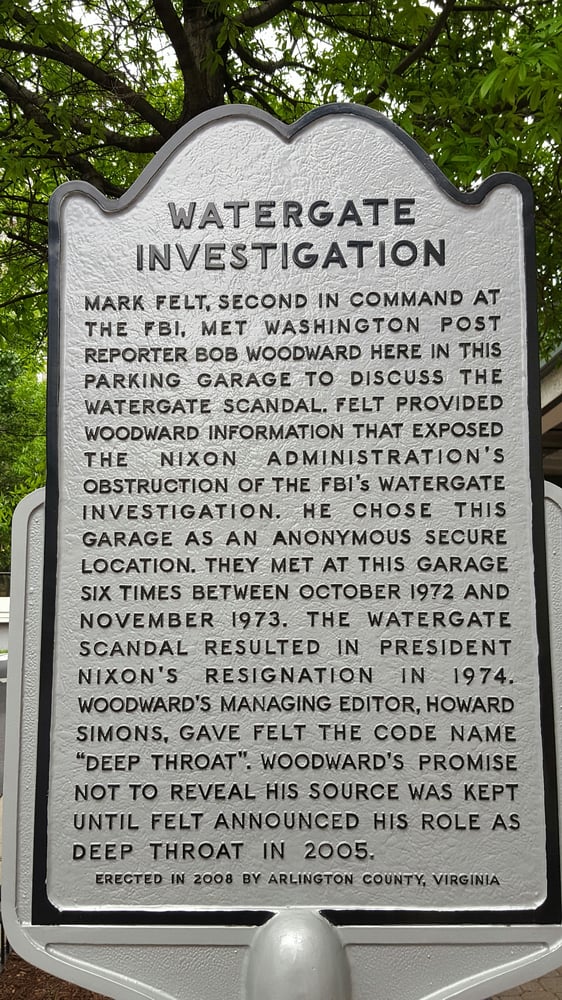
July 29, 2011 U.S. District Judge Royce Lamberth granted a request by historian Stanley Kutler, and others to unseal the testimony given by President Richard Nixon on June 23 and 24 in 1975. Nixon had been questioned about the political scandal during the 1970s that resulted from the break-in of the Democratic National Committee headquarters at the Watergate office complex in Washington.
Lamberth ruled in the 15-page opinion that the special circumstances, especially the undisputed historical interest in Nixon’s testimony, far outweighed the need to keep the records secret. “Watergate significance in American history cannot be overstated,” Lamberth wrote, adding that the scandal continues to attract both scholarly and public interest. “The disclosure of President Nixon’s grand jury testimony would likely enhance the existing historical record, foster scholarly discussion and improve the public’s understanding of a significant historical event,” he said.

